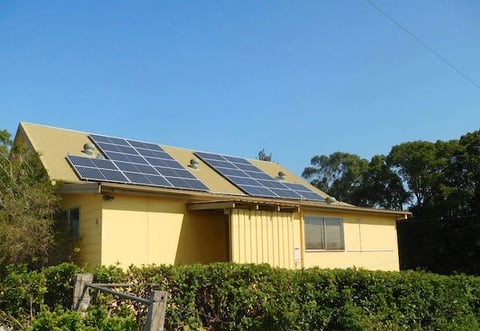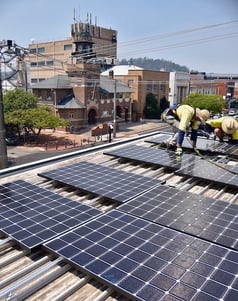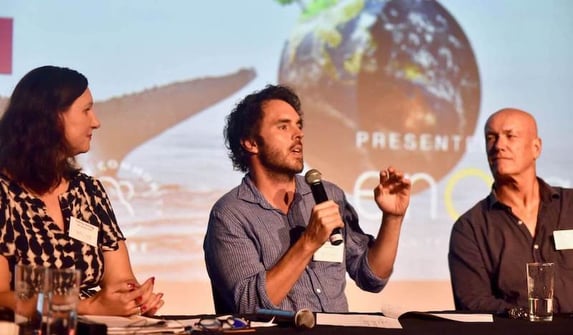Fires, flood and a global pandemic. Homes and lives lost through summer and now a million Australian jobs and our community’s health on the line. The need to build resilience across our regional and urban communities is more essential than ever. During 2020, the importance of this was really been brought home to so many of us. And now we are at home, wondering how exactly to do it.
In this blog, we’re looking at resilience and what it means for communities in the face of adversity. And what it means for us, at Enova. After all, it’s Enova’s vision to be the leading social enterprise in creating self-sustaining communities.
Resilience in regional and urban contexts
We’ve borrowed some definitions of resilience from organisations doing this work in both regional and urban centres.
The Community and Regional Resilience Institute which is focused on enhancing the resilience of communities, says
“Community resilience is the capability to anticipate risk, limit impact, and bounce back rapidly through survival, adaptability, evolution, and growth in the face of turbulent change.”
The 100 Resilient Cities project, in which Sydney was a participant, defines urban resilience as
“the capacity of individuals, communities, institutions, businesses and systems within a city to survive, adapt, and grow no matter what kinds of chronic stresses and acute shocks they experience.”
“Building urban resilience requires looking at a city or town holistically: understanding the systems that make up the city and the interdependencies and risks they may face. By strengthening their underlying fabric and better understanding the potential shocks and stresses it may face, a city or town can then improve its development trajectory and the well-being of its citizens.”
Resilient communities depend on infrastructure and services such as adequate roads, energy systems, telecommunications, health services and transport. They also need enthusiastic and motivated people, community organisations that work well, a long term ‘vision’ for the community and a strong focus on practical action to achieve the vision.
 By installing solar panels on community hall rooftops around Mullumbimby, NSW, Enova and Partners COREM are building local energy resilience
By installing solar panels on community hall rooftops around Mullumbimby, NSW, Enova and Partners COREM are building local energy resilienceResearch has suggested that communities that are successful in supporting healthy, sustainable and economic development pay attention to seven types of capital: natural, cultural, human, social, political, financial and built. Building resilience boosts communities by helping to create social, political, environmental, economic and technological benefits.
As you can see resilience is complex and involves the integration of people, places, systems and infrastructure to boost the capacity of a place to ‘weather the storm’ (or the fire, or the flood, or the epidemic just like in recent times)…
We’ll include some links to websites, articles and resources at the bottom of this blog so you can read more if you’re interested in delving more deeply into what building resilience might look like in your community - whether it be as small as a block of units or your street; or, as large as a regional town or city suburb.
What does energy resilience mean?
Enova Community Energy is focusing on one aspect of resilience-building at present. Energy resilience. We’re a social enterprise focused on reinvesting profits back into community projects, particularly community energy projects, like shared batteries, virtual power plants, microgrids and solar gardens which all support this vision.
The 20th-century system does not contribute to building local community resilience, it takes resources out of our communities while at the same time contributing to polluting carbon emissions. In simple terms, coal-fired energy flows in and money flows out.

Our household electricity bills are often paid to foreign-owned corporations with no benefits to local communities. There’s no local community ownership of any energy infrastructure and the systems that exist are not resilient to climate-related natural disasters like the recent fire crisis.
Our homes are connected to poles and wires, where that energy is traditionally made thousands of kilometres away to be delivered into our homes. These poles and wires are incredibly expensive to maintain, and they lose energy along the way which the end-user (us) pays for. These old systems are also at risk from climate-related natural disasters as we recently saw in summer’s bush fire crisis where re-building of power networks are still being completed at the time of writing.
A community building its energy resilience would be:
- Less reliant upon long-distance power lines for its electricity supply, and
- More able to generate and share (or distribute) its own renewable energy.
- There would be more locally-owned renewable energy generation including rooftop solar, solar projects, renewable energy storage and energy sharing technologies like batteries and per-to-peer trading.
- These initiatives would be owned locally, not by a foreign or large corporation.
How this creates energy resilience is:
- The localised systems are less susceptible to large scale climate-related disasters,
- They are more easily able to be protected in times of crisis or rebuilt locally if they are damaged.
- They keep energy money circulating locally and they involve local people coming together to create new local assets and local jobs.
- It strengthens the local economy and the local asset base, helping communities to become more self-sustaining.
What energy resilience looks like in real life
New technology and these kinds of ideas have enabled new energy systems to be implemented in many kinds of communities, and they are already helping to build resilience in local places around the world.
In just one of many examples, in Bangladesh, there’s a community that has used new technology to strengthen its local economy through transforming its energy. It now generates and shares its own renewable energy and the people have created a network of renewable energy microgrids.
This may sound straightforward but the flow on impacts are incredible. Children can now stay up to do homework after dark increasing education levels, the ability to trade solar energy between households allows incomes to increase, and those higher incomes are being spent in local businesses. All kinds of quality of life measures are improving, because they’ve taken back control over energy generation and distribution.

Damon Gameau, 2040 Film Director: “… the best thing that everybody said was that the money stayed within the community…They’re all buying and selling energy amongst each other. There are just so many advantages to doing this and I think that’s why eventually it’s going to break through.”
In the Australian context, Enova Community Energy is focussed on supporting local Australian communities to generate, store and share their own renewable energy.
As an electricity retailer with a not-for-profit arm, we can connect with many people across many communities. We’re creating a system where our customers directly contribute to creating community energy outcomes. We’re already reinvesting funds back into community projects that help build local renewable energy infrastructure and share the benefits of that renewable energy amongst community members.
Felicity Stening, Enova Energy CEO: “Building the resilience into communities through distributed energy I see as critical and that’s the reason why Enova was set up … so that we can fortify local communities.”
These initiatives include our first Shared Community Battery project and through community partnerships launching Australia’s first Social Access Solar Garden.
Our focus on transforming energy aims to eliminate carbon emissions, strengthen community capacity for everyone and stop that flow of resources out of the community. It aims to fortify communities by placing renewable energy infrastructure within local areas so that those areas can generate, store and share energy locally. This reduces reliance on vulnerable poles and wires and enables energy money to continue circulating locally.
In the video that’s provided with this blog article, Giles Parkinson, Editor of Renew Economy mentions Malacoota.
Giles Parkinson, Renew Economy Editor: “They’ve known for decades it’s actually much cheaper, smarter and safer to have a microgrid in these places…. Hopefully because of the bushfires we’ll start to have microgrids all down the coast...They make sense economically. They work.”
Most of us will have seen the devastating images of the out-of-control bush fires descending down onto the small coastal town and people sheltering in the water or in their boats. So many of our small regional towns were impacted by the recent bush fires. Giles points out that microgrids are the answer to rebuilding local, resilient and renewable energy systems here and now. Allowing those local places to take control back of their energy systems so that in cases of natural disaster like the fires, the community has something in place to rebuild and get back on its feet quickly.
Get started on the journey toward energy resilience in your community!
People in communities really do have the opportunity to come together actively around their energy and co-create community energy with partners. Part of the journey toward community energy resilience is the process of instigating people-centred processes so that communities can decide what they want to do and how they move forward. Community-owned energy is a growing movement. And the great news is that the technology now exists to enable the sharing of that energy amongst local people.
Interesting articles explaining how community energy builds resilience and the opportunity for community energy investment during this time of COVID-19:
- Community energy movement: Reductions enable Resilience
- Solar, batteries, micro-grids and ISP should be added to COVID-19 response
- The Rise of Community Energy
- Local community energy organisations building energy resilience
- Support and resources for getting started in building energy resilience in your community
We'd love to hear what your community is doing to build its resilience. Please leave your comments below.


